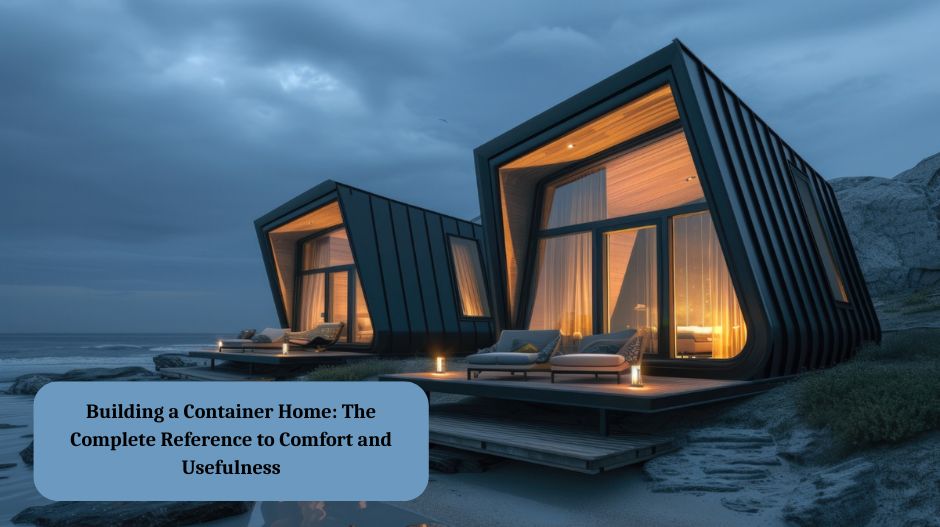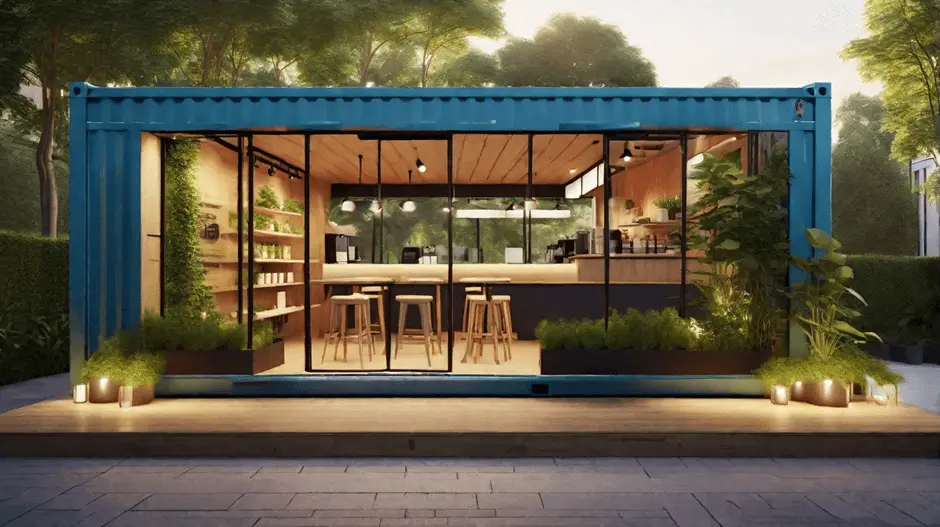Introduction

Container homes have gained immense popularity in the last few years as people start to adapt to this modern class of housing. These homes that have been cited for their cheap, eco-friendly, and distinct style are therefore viable substitutes for conventional homes. With the aim to describe how to build a container home successfully, this guide covers such aspects as the advantages and disadvantages of constructing your home using containers, steps for successful construction, and results you can achieve.
Why Construct a Container Home?
Affordability and Cost Efficiency
Container homes are cheaper compared to the regular houses in the market. The first component, a used shipping container, as the main component can be bought at a relatively low cost compared with traditional buildings’ materials. Also, the construction phase is normally faster, making it cutter to handle the labor aspect and the total expenses of the construction work.
Sustainability and Environmental Benefits
Using new-age retail boxes as homes is considered environmentally friendly because it is a form of recycling. He stated that it decreases the need for acquiring new resources and results in less construction wastage. Another point of interest is that container homes can be built with energy-save elements, thus having a low impact on the environment.
The organization and design of the structures can change in accordance with the tasks and opportunities.
In this aspect, containers add more flexibility to the architectural design of the systems. They stack one on top or the other or can be rearranged in a style that speaks of the person’s taste and preference for living. Container homes are very diverse when it comes to appearance and facilities, covering the basic and the most luxurious variants.
Proceeding to Your Container Home Project
Researching Local Laws Pertaining to Real Estate
First of all, it is necessary to study the legislation of construction and zoning of the territory beforehand. These regulations are often local and the local laws can contain elements like the use of the land, the height of the constructions, and the distances that structures need to stand from each other.
Selecting the Right Container
The selection of the type of container is one of the most crucial decisions, which has to be made. Some of these are size, condition, and type, which can either be a standard, high cube, or refrigerated. Secondhand containers are cheaper but they may pose some issues that may need to be fixed or altered so that they can fit in for a residential function.
Designing Your Container Home
Design considerations include:
Layout and Space Utilization: When you are laying down the plan ensure that it is as compact as possible to maximize the available space. Think about the open floor options or Multi-Container layout if there are some particular requirements for living.
Insulation and Climate Control: They are reusable in that they are made from steel and steel being a conductor of heat it warms up easily. Insulation is crucial in regulating indoor temperatures and conserving heat, this is why insulation is fundamental to building.
Ventilation and Natural Light: Proper lighting and ventilation should be provided, and should include windows and or skylights that will help in the provision of natural lighting and air.
Constructing Your Container Home
Foundation Requirements
There needs to be a good base as a foundation so that the containers will not crumble or shift when they bear their weight. Choices are a concrete slab, concrete piers, or steel beam depending on what the soil conditions are like and what area code the building is in.
Modifying the Containers
Alterations include making adjustments and creating apertures for doors, windows, and utilities among others. Strengthen the sides, top, and bottom of the container depending on the specific design and add insulation to increase Thermal resistance and sound dampening.
Interior and Exterior Finishes
This consists of floor, wall, and ceiling finishes as well as fixtures. Select the proper materials that are fine and immune to dampness together with those that will be appropriate for the given decorative styles. Cladding or siding along with painting is another type of exterior finish that provides better protection from harsh weather and at the same add to the aesthetic value.
Budgeting and Financial Considerations
Cost Breakdown
Container Acquisition: Prices vary from $2000 to $20000 according to the size of the outer structure and the condition of the inner structures.
Construction and Labor: Pricing depends on the complexity of the design, additional changes, and daily wages of the technicians and engineers in the area.
Utilities and Amenities: Include the cost of plumbing, electricity, and the heating, ventilation, and air conditioning systems among other utilities.
Financing Options
The financing options when it comes to a container home could mean conventional home financing or mortgage, personal funding, or the construction loan type of financing. Explain your intentions and requirements regarding funding of your project to the lenders who are aware of other forms of housing projects.
Residing in a Container Home
Practical Considerations
Maintenance: To keep the container in good condition free from corrosion and still structurally sound, then the container should be inspected frequently and perhaps, maintained regularly.
Comfort and Livability: Improve climate acceptability with the right type of insulations, ac, heater, and furnishing among others.
Community and Legal Considerations: You have to also confirm to the laws of your homeowner association, lease policies or local regulations that may have an influence on the use of container homes.
Conclusion:
Living in a container home is a creative concept that is also aligned with sustainable living while being cost-effective. The process may take a lot of time and, when it comes to construction, there are some rules and regulations that have to be followed, however, the final outcome can be a very impressive, individualistic living environment that complies with the tendencies of the modern design and is environmentally friendly. To sum up, regardless of whether it has been the cost per square meter, sustainability, or the possibility of versatile design, the further journey could result in a fulfilling and unique lifestyle of living in a container home.
In addition to general container homes, storage containers in Chennai and used shipping container dealers in Chennai offer a wide range of options for those interested in exploring this innovative housing solution. These local resources provide access to high-quality containers that can be repurposed into stylish and sustainable living spaces.
